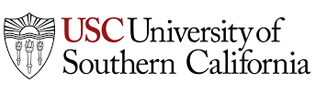
This paper introduces a framework to examine the relative effectiveness and cost-effectiveness of different information and communications technologies to deliver a range of social services, using a case example of rural Bangladesh. It focuses particularly on major sectors such as agriculture, education, disaster response and healthcare. An expert elicitation (using both local and international experts) on ICT effectiveness by service domains shows localization as the key determining factor for any technological intervention. Community-based radio broadcasting (CR) appears as the dominant option among the considered ICTs. Human intervention has been found to be crucial in both low (20%) and medium-high (60%) literacy populations. Our study also shows public funded terrestrial TV is more effective and has higher acceptability in providing information over privately owned satellite/cable TV channels. Literacy doesn’t seem to significantly affect the relative effectiveness of information centers with Internet connection over print and TV-based options. In addition, an extensive techno-economic model for the various ICTs and stochastic evaluation of potential penetrations of the ICTs (reach) has also found CR to be the most cost-effective option. We conclude with a proposed set of policy and operating recommendations to enable effective technology-based information services for rural Bangladeshi development.
Cost-Effectiveness of Information Services; social services; Bangladesh; agriculture; education; disaster response; healthcare; CR; literacy; TV










